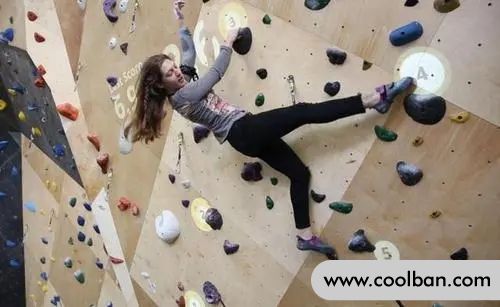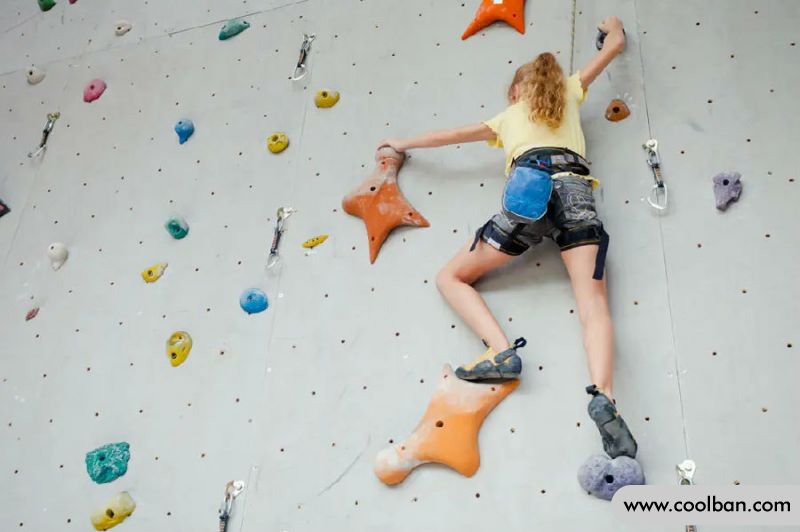What should novice rock climbing pay attention to
What are the most important rock climbing tips that beginner rock climbers need to know? I would say: The biggest trick is that you love the sport. It seems more logical to talk about technique when climbers can feel the joy of climbing differently.
I'm assuming a novice rock climber has just come off a big wall and experienced the joys of high-altitude extreme sport climbing, whether the fun comes from overproducing dopamine, enjoying some cool moments to show off money, or overcoming achievement from height and lack of control. It is the happiest thing to be able to feel the change of breathing and feel comfortable when climbing.

The fun and rules of rock climbing
As a rock climbing enthusiast, I definitely hope that more novice rock climbers can also feel the fun of rock climbing. A lot of the fun is based on knowing the rules of the route. For an aspiring rock climber, rock climbing is a bit of a waste of time, so let's talk routes.
How to interpret a route: In the case of bouldering, climbing gyms often choose to mark a complete route with moves of the same color. Use quick markers to mark start and end points (usually tape), most climbing gyms will use The V-tape specifies the start point (some mark the hands and feet, some mark the hand only) and use the T (top) to mark the end point. Use tapes of different colors to mark easy lines.
However, due to space and funding constraints, more climbing gyms choose to use tape to mark routes. Tapes of the same color represent the same difficulty of the route.
Route difficulty level: The difficulty of bouldering generally starts from V0, and the difficulty of common rock gym routes generally reaches V7 or V8. When beginners are just starting to climb, they can choose the V0 and V1 routes to try. If you think rock climbing is not too difficult, you can increase the level appropriately. I have seen two new rock climbers climb V3 at the beginning, and rock climbers who play parkour can climb the difficulty of 11 for the first time. However, it is still recommended that ordinary rock climbers try not to climb too hard to avoid injury.

As a novice, what should I pay attention to when climbing?
Let's start with four simple climbing posture techniques:
1. Novices should use their toes when stepping on the rock, do not choose the arch or the outer side of the foot. The purpose is very simple, not all points on the rock wall can be stepped on with one foot, and sliding down is dangerous. One is that this technique does not require a large contact area, and the other is that it is more stable to step on and easier to move when climbing.
2. Straightening the arms This technique is easy to understand, because climbing itself does not rely too much on the strength of the upper body. After straightening the arms, it will be easier for us to put the weight of the body on the legs, exert force through the legs, and use the movement of the crotch to drive the movement of the body.
Tip: A lot of people say rock climbing, but I think the correct way is to climb away from the rock. Only by keeping the body close to the rock wall away from the rock wall can you have a better view of the foothold and it is easier to shift the center of gravity down.
3. Novices need to relax their shoulders. This is the hardest technique to master, many newbies will say my arms are straight, but why can't I move? Most of the time, in addition to the body being straightened, it is more that the shoulders of the novice are not relaxed, the arms are straight but the shoulders are tight, and the body has no room for movement and exertion. How to judge whether the shoulders are relaxed or not, you can actually see whether the neck is shrunk. When the neck is shrunk when climbing, the shoulders cannot be relaxed. The novice's method of adjusting the shoulder relaxation is also easy to grasp, which is to leave space between the body and the rock wall. If you can observe your feet against a straight wall, you are usually in a relaxed state.

4. Heel pressure. Summarizing this climbing technique is because many beginners like to lift their heels. Of course, not all points require heel press, as different points will pedal differently. But for some small points, the benefits of heel pressure are obvious. One is to stabilize the angle. Once the heel is lifted, the ankle joint is unstable, and the muscle capacity is not enough to withstand the pressure of the body, and the foot will start to tremble. The second is that after the heel is pressed down, if the stepping point is not stepped on, when the foot slides down, the knee will not directly hit the rock wall to avoid knee injury.
After talking about the climbing posture, let's talk about the principle of action skills. We all know that the triangle has stability, and people have limbs, so when we are on the rock wall, we will choose the law of triangle movement, two feet and one hand on the rock wall, and the other hand moves. Or when both hands and one foot are on the rock wall, move the other foot. In short, keeping your three limbs on the rock wall can basically ensure your climbing posture is balanced and safe.
Of course, when we are climbing, we often encounter not so good-looking stepping points. The principle to follow at this point is the diagonal principle. Left hand and right foot or right left foot on the rock wall, avoid left hand and left foot, right hand and right foot. That is, to prevent yourself from becoming a door pivot and being thrown out when climbing.
